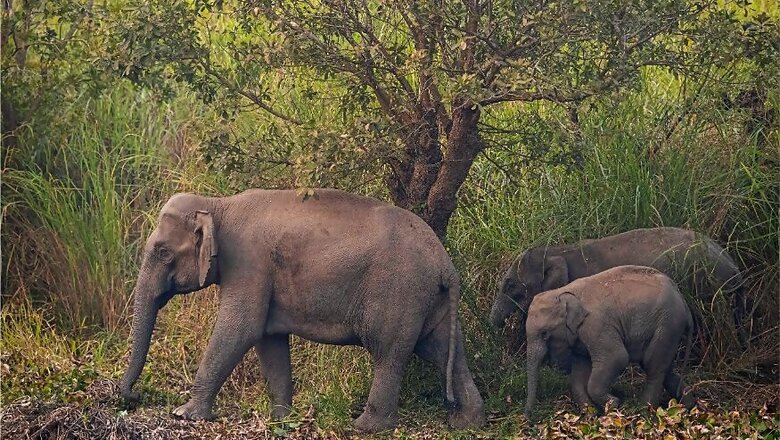
views
New Delhi: With about a million animal and plant species faced with extinction threats due to declining health of ecosystems as per the United Nations' landmark 2019 report on biodiversity, 130 countries will gather in Gujarat from Monday to discus enhanced protection of migratory animals at the 13th COP CMS (Conference of Parties to the Convention on Conservation of Migratory Species).
The conference is an environment treaty under the United Nations Environment Programme (UNEP). Prime Minister Narendra Modi will inaugurate the conference on Monday at Gandhinagar.
The triennial event will see India move key proposals seeking enhanced protection for the critically endangered Great Indian Bustard, Asian Elephant and Bengal Florican.
The procedure of the summit mandates that the country move a proposal for discussion and debate for the species to be included in Appendix I and II of the CMS, depending on the urgency of the protection.
Those that are threatened with extinction are included in Appendix I. Once a wild animal is included in Appendix I, countries that are part of the ranges of these wild animals have to push for greater habitat protection, prohibit their poaching and facilitate their movement.
The Great Indian Bustard, found only in the Indian subcontinent, is considered close to extinction as its population has dropped to 150 and largely concentrated in the Desert National Park in Rajasthan. A large terrestrial bird, the Bustard is facing a plethora of problems for survival ranging from dwindling habitat, hunting, low breeding, fatalities due to power lines and threats from other animals.
Radio-tagged Bustards have been found to moving to Cholistan desert in Pakistan where it faces similar threats.
The proposal to seek greater protection for Asian Elephants is important as the sub-species found in India migrates into Bangladesh and Nepal. According to India's proposal on the elephant, a population of 93 elephants move across the boundaries between India and Bangladesh.
“This for Bangladesh would represent nearly 25% of its population, but for India it would represent 0.2% of its population. Similarly, in Borneo the entire population in Kalimantan (Indonesia) is likely to be migratory across the border on a seasonal basis, but for Malaysia (Sabah) these elephants represent less than 3% of their population,” the proposal said.
The last elephant population estimation found 29,964 wild elephants in India.
Apart from these two animals, the conference will also see a discussion to enhance protection for Jaguars, the biggest wild cat found in South America, Oceanic White-Tip Shark, Smooth Hammerhead Shark, Antipodean Albatross and Little Bustard.
Light pollution, impact of aquatic pollution on marine mammals and ecological connectivity for migration of wildlife are some of the other key issues on the anvil at the conference.

















Comments
0 comment